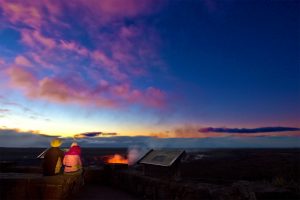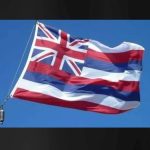Entrance Fees to Increase at HVNP
Hawai’i Volcanoes National Park will increase entrance fees to the park, beginning on June 1.
The increases are part of a three-year incremental plan to meet national standards for parks with similar visitor amenities.
Per-vehicle fees will increase from $15 to $20. The pass will still be valid for a seven-day period. The per-person fee, which is paid by bicyclists and pedestrians, will increase from $8 to $10, and motorcycle fees will increase from $10 to $15.
The Tri-Park pass, which is largely considered the kama’aina or resident pass, will not change in rate in 2016, but will increase from $25 to $30 in 2017.
Based on public input, the park proposed the $30 fee for the Tri-Park pass over the national standard of $50.
The annual Tri-Park Pass is available to all visitors and allows unlimited entry for one year to three national parks: Hawai‘i Volcanoes National Park, Pu‘uhonua o Hōnaunau National Historical Park, and Haleakalā National Park.
Fee changes at HVNP also extend to back-country and front-country campsites, including Kulanaokuaiki Campground.
The fee is $10 per site per night.
Back-country campsites will have a stay limit of three consecutive nights, while the front-country campsites will have a stay limit of seven consecutive nights.
Currently, camping is free, except at Nāmakanipaio Campground, which is managed by Hawai‘i Volcanoes Lodge Company, LLC. The new camping permit fees are similar to other public camping fees statewide.
Entrance fees will also increase for commercial tour companies. Currently, road-based tour vans carrying one to six passengers pay a $25 base fee and $8 per person to enter the park.
The commercial per-person entrance rate will increase to $10 on June 1 and $12 beginning in 2017 through 2021. The base fee will not change.
Non-road-based tour companies, including hiking tour companies that are on trails more than touring the park by vehicle, don’t pay a base rate, but their per-person entrance fees will increase under the proposed schedule.
Recreational entrance fees are not charged for those under 16 years old or holders of the Tri-Park, America the Beautiful National Parks and Federal Recreational Senior, Access, or Military passes.
The current National Park Service fee program began in 1997 and allows parks to retain 80 percent of the money collected.
Projects funded by entrance fees at HVNP include ongoing trail maintenance, cabin repairs, hike pamphlets, restrooms, picnic tables, and more.
The transformation of the 1932 Administration Building ‘Ōhi‘a Wing into a cultural museum that visitors will soon enjoy is also a fee-funded project.
In addition, entrance fees also protect the Hawaiian ecosystem by funding fencing projects that prevent non-native ungulates like pigs and goats from devouring rare native plants.
A NPS report shows that 1,832,660 visitors to HVNP in 2015 spent $151,246,200 in communities near the park. That spending supported 1,834 jobs on island and had a cumulative benefit to the local community of $189,391,100.

Image of ‘ōhā, or Clermontia parviflora an endemic lobeliad, found only on Hawai‘i Island, in bloom along the trail to Nāhuku (Thurston Lava Tube). Entrance fees help protect the Hawaiian ecosystem by funding fencing projects that prevent pigs and goats from devouring native plants. NPS Photo/J. Ferracane.


















